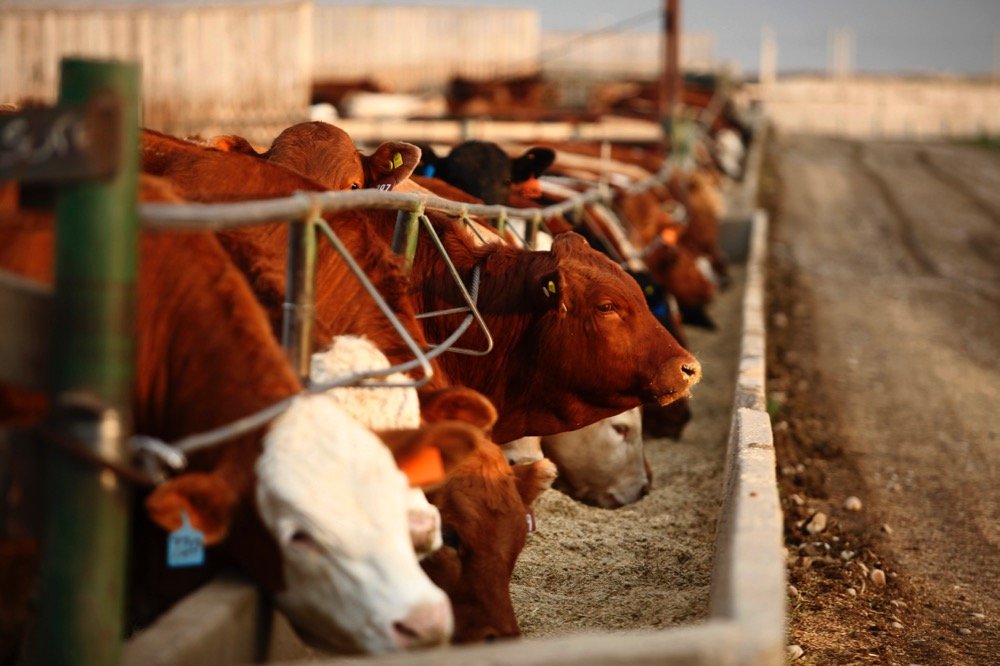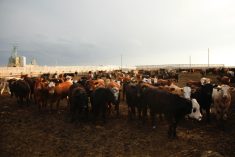Compared to last week, western Canadian yearling markets traded $3-$6 lower with some reports showing prices as much as $10 lower. Calves traded $2-$4 below week-ago levels; however, the market will be more defined next week, with many auction barns scheduling feature calf sales in the major feeding areas of Alberta. Feeding margins in the deferred positions have moved into negative territory with the recent rally in the feed grain complex. Secondly, larger volumes of yearlings are coming on the market in Saskatchewan and Manitoba, which contributed to the lower price structure.
Read Also

Alberta crop conditions improve: report
Varied precipitation and warm temperatures were generally beneficial for crop development across Alberta during the week ended July 8, according to the latest provincial crop report released July 11.
The quality of cattle was quite variable and packages of fleshier yearlings were more common this past week. Feedlots in Alberta are in the midst of corn silage and this may have contributed to the weaker tone. There were fewer hands available for processing; however, feeder cattle on a health program didn’t appear to reflect much of a premium. Feedlot inventories in Alberta and Saskatchewan are nearly 20 per cent above the five-year average. Pen space is at a premium and there is still a large backlog of market-ready supplies. The tide turned on the yearling market this past week as buyers absorbed a wave of negative factors.
In western Saskatchewan, a group of heavier-flesh mixed heifers weighing 960 lbs. were valued at $165 while similar-quality steers averaging 950 lbs. were quoted at $176. In southern Alberta, a smaller group of medium- to larger-frame tan steers with lower flesh levels averaging 850 lbs. were quoted at $190 while a group of black larger-frame steers weighing just over 800 lbs. were valued at $203. Mixed medium-frame red heifers with lower flesh averaging 860 lbs. were quoted at $170 in the same region.
The calf market is moving through a period of price discovery, with values for similar-weight feeders varying by $8-$10 depending on location and the delivery period. In Manitoba, Charolais-based steers averaging 630 lbs. were valued at $218 and similar-quality heifers averaging 670 lbs. were quoted at $181. In eastern Saskatchewan, a smaller group of Simmental-blended steers weighing 575 lbs. were quoted at $228 and Angus-based heifers averaging 600 lbs. were reported at $190. In central Alberta, a smaller group of red mixed steers weighing just under 600 lbs. were reported at $212 and black mixed heifers averaging 525 lbs. were quoted at $192.
Barley carryout for the 2020-21 crop year is projected to be historically tight, so this rally doesn’t appear to be over. Lethbridge barley was trading in a range around $240 per tonne last week for spot delivery and prices in deferred positions are $10-$15 per tonne higher. Export values are also percolating higher, driving prices in the non-major feeding areas.
— Jerry Klassen manages the Canadian office of Swiss-based grain trader GAP SA Grains and Produits Ltd. and is president and founder of Resilient Capital, specializing in proprietary commodity futures trading and market analysis. Jerry consults with feedlots on risk management and writes a weekly cattle market commentary. He can be reached at 204-504-8339 or via his website at ResilCapital.com.















